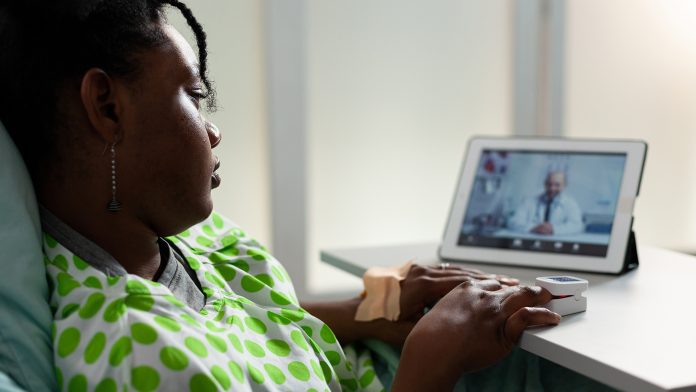
In an impressive achievement, the NHS has realised its ambitious goal of deploying 10,000 virtual ward beds by the close of September, as revealed by the latest data.
These innovative virtual wards have now facilitated treatment for over 240,000 patients, establishing the NHS as a global leader in healthcare innovation.
Moreover, research findings underscore that patients receiving care in the comfort of their homes exhibit comparable or even improved recovery rates compared to those treated within hospital walls.
England’s chief medical officer has lauded the commendable efforts of local NHS teams for spearheading the establishment of 10,421 virtual ward beds, granting patients access to expert care for a range of medical conditions, including chronic obstructive pulmonary disease (COPD), heart failure, and frailty-related ailments in the familiar environment of their homes.
Professor Sir Stephen Powis, NHS national medical director, commented: “The NHS is embracing the latest technology, with regular check-ins from local clinicians in daily ‘ward rounds’ while freeing up hospital beds for those that need them most – it is a testament to the hard work and dedication of NHS staff across the country that we have delivered on our target and rolled out more than 10,000 virtual ward beds by the end of September.
“We know that industrial action is also continuing to pile pressure on services and impact capacity, adding a lot of pressure to hospitals before winter, coming on top of high levels of demand with last month seeing more 999 ambulance calls than any month this year as well as the busiest September ever for A&E attendances, up almost 8% on the same month last year.
“NHS staff are working incredibly hard to deliver for patients with 10% more patients coming off the waiting list in August than the same month before the pandemic.
”
Cutting NHS waiting lists
This achievement has come to fruition amidst tremendous demands on the healthcare system’s urgent and emergency services. September emerged as the busiest period for ambulance services in the current year, with an astounding 827,690 emergency calls to the 999 hotline, setting a record for September with 77,553 category-one callouts.
Concurrently, the A&E departments across the country have been pushed to their limits, experiencing their busiest September ever, with 2,165,741 patient attendances, marking an 8% surge compared to the corresponding month in the previous year.
September also recorded a substantial 7.1% increase in emergency admissions, totalling 522,000, showcasing the relentless pressure on the NHS.
Despite the tumultuous backdrop of industrial action that gripped the NHS in August, the healthcare system has managed to treat an impressive 10% more patients, amounting to 1,422,225 individuals.
Nonetheless, the ongoing industrial actions continue to impact hospital capacity and services, resulting in challenges, particularly with regard to patient discharges and routine care. In September, the effects of industrial action were palpable, evident in the 3.09% increase in delayed discharges, which surged to 12,372 from the August figure of 11,913.
Virtual ward beds are improving cancer care
In August, there were notable achievements in the realm of cancer care. Urgent cancer referrals reached an all-time high, with 267,555 patients being seen.
This figure marked a substantial increase of over one-third compared to the same month before the pandemic, which had 200,317 referrals in August 2019. Additionally, it showed improvement from the previous year, surpassing the 256,942 referrals in August.
Furthermore, August witnessed a significant number of individuals commencing cancer treatment, totalling 28,363. This was a 10% rise when compared to the corresponding month prior to the pandemic, which recorded 25,767 initiations in August 2019.
The implementation of virtual ward beds has emerged as a transformative element in healthcare, enabling patients to receive hospital-level care in the safety and comfort of their homes, surrounded by loved ones and caregivers. This not only expedites their recovery but also eases the burden on hospital beds, ensuring they are available for patients in dire need.
Patients under this care model are looked after by skilled clinicians capable of providing a range of services, including blood tests, medication prescriptions, and intravenous fluid administration. They undergo daily reviews either through in-home or virtual visits as part of their ‘ward rounds’.
Additionally, technology tools such as apps, wearables, and other medical devices are employed to facilitate remote monitoring of their progress.
























